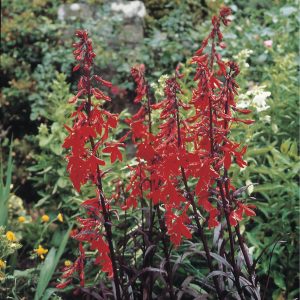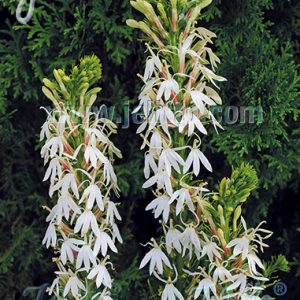Lobelia plants, known for their vibrant flowers and versatility, are a wonderful addition to gardens, borders, and containers. Follow this planting guide to ensure the successful establishment and flourishing of your Lobelia:
Site Selection
Sunlight: Choose a location with partial to full sun. While Lobelia prefers full sun, it can tolerate partial shade, especially in regions with hot summers.
Soil Type: Plant in well-draining soil rich in organic matter. Lobelia prefers slightly acidic to neutral soil. If your soil is heavy, amend it with compost or organic matter to improve drainage.
Planting Time
Spring or Autumn Planting: Optimal planting times are in spring after the last frost or in autumn, allowing the plants to establish before extreme temperatures.
Planting Process
Digging the Hole: Dig a hole slightly larger than the root ball. Space multiple Lobelia plants about 6 to 12 inches apart, depending on the variety.
Root Ball Positioning: Place the Lobelia in the centre of the hole, ensuring the top of the root ball is level with the soil surface.
Watering
Initial Watering: Water the plants thoroughly after planting to settle the soil. Keep the soil consistently moist during the first few weeks to encourage root establishment.
Regular Watering: Lobelia prefers consistently moist soil. Water regularly, especially during dry periods. Avoid letting the soil dry out completely.
Mulching
Mulch Application: Apply a layer of mulch around the plants to retain moisture, suppress weeds, and regulate soil temperature. Keep the mulch away from the base of the plants to prevent rot.
Fertilisation
Balanced Fertiliser: Apply a balanced, water-soluble fertiliser every 4-6 weeks during the growing season. Follow the package instructions for application rates.
Pruning
Deadheading: Remove spent flowers regularly to encourage continuous blooming. Trim back the plants if they become leggy to promote bushier growth.
Winter Care
Perennial Varieties: In colder climates, provide a layer of mulch in the autumn to protect the plants’ roots during winter. Perennial Lobelia varieties may benefit from winter protection.
Container Planting
Well-Draining Containers: If planting in containers, use pots with drainage holes and a high-quality potting mix. Water container-grown Lobelia when the top inch of soil feels dry.
Pests and Diseases
Vigilance: Keep an eye out for pests like aphids or diseases such as powdery mildew. Treat promptly with insecticidal soap or fungicides if needed.
Enjoy the Blooms
Blooming Period: Lobelia typically produces an abundance of flowers from late spring to early autumn. Enjoy the vivid colours and the attraction of pollinators to your garden.
By following these guidelines, you’ll create an ideal environment for your Lobelia plants to thrive. Customise care based on your local conditions and the specific variety you’ve chosen.











